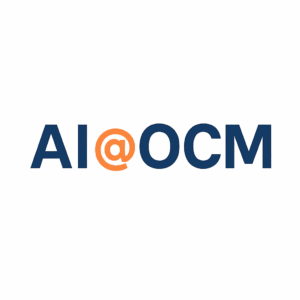In today’s digital era, Artificial Intelligence (AI) and Machine Learning (ML) technologies are revolutionizing industries by offering ways to optimize processes, increase efficiency, and provide unprecedented insights into data. Companies are increasingly encouraging their employees to adopt these technologies, often with employees taking initiative through self-taught methods and minimal formal guidance. This approach, while beneficial in fostering a culture of learning and innovation, can also pose significant risks if not managed effectively. This is where Organizational Change Management (OCM) comes into play. In this blog post, we’ll explore the dual-edged impact of self-directed AI/ML technology adoption in the workplace and how OCM can be a pivotal factor in enhancing its benefits and mitigating its risks.
The Double-Edged Sword of Self-Taught AI/ML Adoption
Benefits of Self-Directed Learning
Innovations and Improvements
Employees who are motivated to learn AI/ML technologies often bring new ideas and innovations that can lead to process improvements. This kind of initiative can uncover opportunities for applications of AI/ML that a formal training program might overlook.
Cost Efficiency
AI/ML technologies can automate tasks that were previously labor-intensive, reducing costs significantly. Self-taught individuals often experiment with these tools to streamline workflows, which can lead to more efficient use of resources.
Skill Enhancement
By learning new technologies, employees not only enhance their own skill sets but also add value to their teams and the broader organization. This can lead to greater job satisfaction and lower turnover rates.
Agility and Competitive Advantage
Organizations that embrace learning and adaptation are better positioned to respond to industry changes swiftly. Knowledge of AI/ML can provide a competitive edge by enabling faster and more informed decision-making processes.
Data-Driven Decisions
With competencies in AI/ML, employees can leverage data more effectively, facilitating superior strategic decisions that are backed by solid analytics.
Risks of Limited Guidance
Inefficiency and Misuse
Without comprehensive training, AI/ML tools may be misused or underutilized, leading to inefficiencies and suboptimal performance.
Security Vulnerabilities
Improper use of AI/ML technologies can expose organizations to cyber risks and data breaches, especially if sensitive data is mishandled.
Inaccurate Results
Lack of proper expertise can result in erroneous model configurations, leading to inaccurate outputs and potentially costly decision-making errors.
Resource Wastage
Misapplication of AI/ML can consume excessive computational resources, increasing costs unnecessarily.
Legal and Ethical Concerns
Unsupervised use of AI technologies might lead to solutions that inadvertently incorporate bias or violate regulatory compliances, posing ethical and legal risks.
The Role of Organizational Change Management (OCM)
Organizational Change Management (OCM) provides a structured approach to supporting and managing the human aspects of change within an organization, including the adoption of new technologies like AI/ML. By incorporating OCM, companies can maximize the positive outcomes of self-taught AI/ML initiatives while minimizing the risks.
Enhancing Positive Outcomes
Structured Support Systems
OCM can help create support systems that guide self-learning efforts more effectively. By providing resources, training sessions, and mentorship programs, OCM ensures that all employees not only embrace AI/ML technologies but also use them correctly and efficiently.
Fostering a Culture of Continuous Learning
OCM initiatives can institutionalize a culture of ongoing education and innovation, ensuring that self-driven learning aligns with organizational goals and industry standards.
Bridging Skill Gaps
Through OCM, organizations can identify skill gaps and disparities in AI/ML knowledge and provide targeted training to ensure a uniformly high level of competency across all teams.
Mitigating Negative Consequences
Comprehensive Training and Guidelines
OCM can facilitate comprehensive training programs that encompass not only the technical aspects of AI/ML but also its ethical, legal, and business implications, thereby reducing the risk of misuse and errors.
Enhanced Security Measures
By implementing OCM, organizations can ensure that proper security protocols are in place and followed when employees engage with AI/ML technologies, safeguarding sensitive data and compliance with laws.
Monitoring and Evaluation
OCM strategies include continuous monitoring and evaluation of how AI/ML technologies are used within the company. This allows for timely adjustments and interventions to avoid resource wastage and ensure that the implementations deliver the intended benefits.
Conclusion
The self-directed adoption of AI/ML technologies in the workplace presents both significant opportunities and notable risks. Organizational Change Management (OCM) plays a crucial role in maximizing these opportunities and minimizing risks. By effectively managing the change process, companies can not only foster a resilient, innovative, and skilled workforce but also maintain a competitive edge in the increasingly AI-driven business landscape. Implementing OCM with a focus on AI/ML adoption can transform potential challenges into actionable insights and substantial gains for both employees and the organization at large.






